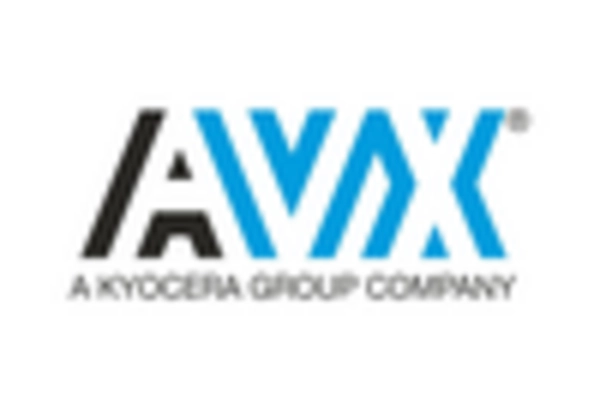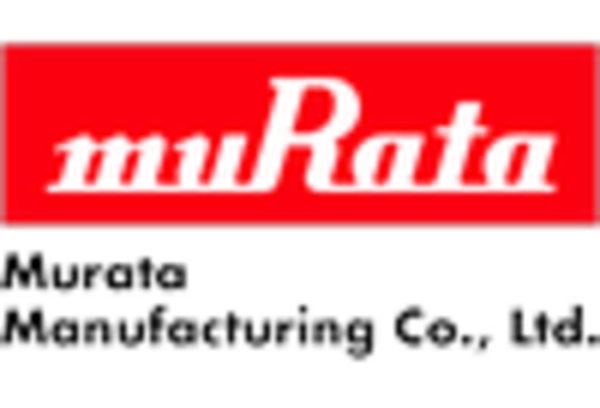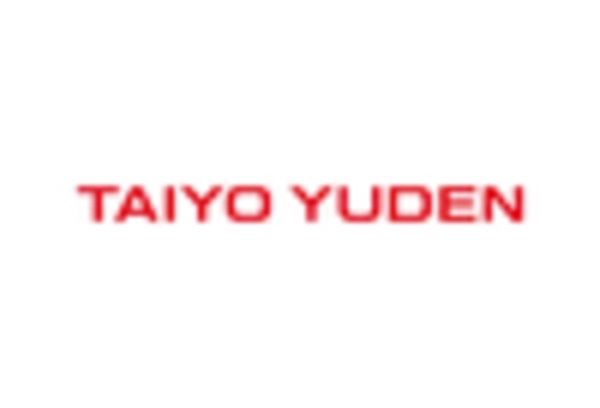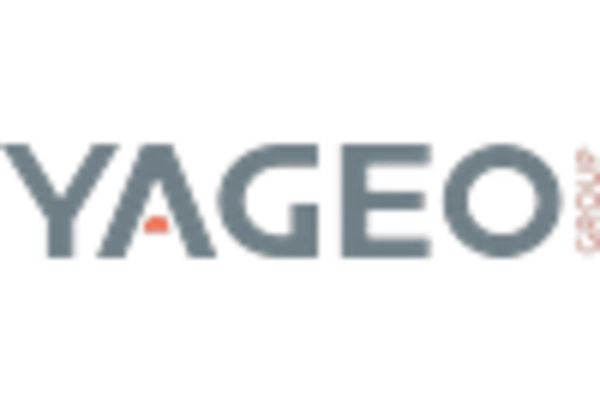Emergence of IoT Applications
The integrated passive-devices market is significantly impacted by the rapid emergence of Internet of Things (IoT) applications. As industries and consumers increasingly adopt IoT solutions, the demand for compact and efficient components rises. In 2025, the US IoT market is projected to exceed $200 billion, indicating a robust growth trajectory. Integrated passive devices are crucial for enabling connectivity, data processing, and energy management in IoT devices. This trend suggests that manufacturers will need to innovate and adapt their offerings to meet the specific requirements of IoT applications. Consequently, the integrated passive-devices market is likely to experience heightened demand, driven by the proliferation of smart devices and the need for seamless connectivity.
Increased Focus on Energy Efficiency
The integrated passive-devices market is significantly influenced by the growing emphasis on energy efficiency across various sectors. As industries strive to reduce energy consumption and lower operational costs, the demand for energy-efficient components rises. In 2025, energy-efficient technologies are projected to account for over $50 billion in the US market, highlighting the importance of integrated passive devices in achieving these goals. These components contribute to minimizing energy loss and enhancing the performance of electronic systems. Furthermore, regulatory frameworks and incentives promoting energy efficiency are likely to bolster the integrated passive-devices market, as manufacturers seek to comply with standards while meeting consumer expectations. This trend indicates a promising outlook for the market, driven by sustainability and cost-effectiveness.
Advancements in Automotive Technology
The automotive industry is undergoing a transformation, with integrated passive-devices market witnessing significant growth due to advancements in automotive technology. The shift towards electric vehicles (EVs) and autonomous driving systems necessitates the integration of high-performance components. In 2025, the US electric vehicle market is expected to surpass $100 billion, creating a substantial opportunity for integrated passive devices. These components are vital for managing power distribution, signal processing, and enhancing overall vehicle efficiency. As automotive manufacturers increasingly adopt smart technologies, the demand for integrated passive devices is likely to rise, positioning the market for robust growth. This trend suggests that the integrated passive-devices market will play a pivotal role in shaping the future of transportation.
Rising Demand for Consumer Electronics
The integrated passive-devices market experiences a notable surge in demand driven by the increasing consumption of consumer electronics. As households adopt smart devices, the need for efficient and compact components becomes paramount. In 2025, the consumer electronics sector in the US is projected to reach approximately $400 billion, with integrated passive devices playing a crucial role in enhancing device performance. This trend indicates a shift towards more sophisticated electronics, where integrated passive devices are essential for miniaturization and functionality. The growing reliance on smartphones, tablets, and wearables further propels the market, as manufacturers seek to optimize space and improve energy efficiency. Consequently, the integrated passive-devices market is likely to benefit from this consumer-driven demand, fostering innovation and competition among manufacturers.
Growth of Telecommunications Infrastructure
The integrated passive-devices market is poised for growth due to the expansion of telecommunications infrastructure in the US. With the increasing demand for high-speed internet and advanced communication technologies, the need for reliable and efficient components becomes critical. The telecommunications sector is expected to invest over $100 billion in infrastructure development by 2025, creating a favorable environment for integrated passive devices. These components are essential for signal integrity, power management, and overall system reliability. As 5G technology continues to roll out, the demand for integrated passive devices is likely to escalate, positioning the market for substantial growth. This trend suggests that the integrated passive-devices market will be integral to supporting the evolving telecommunications landscape.
















Leave a Comment